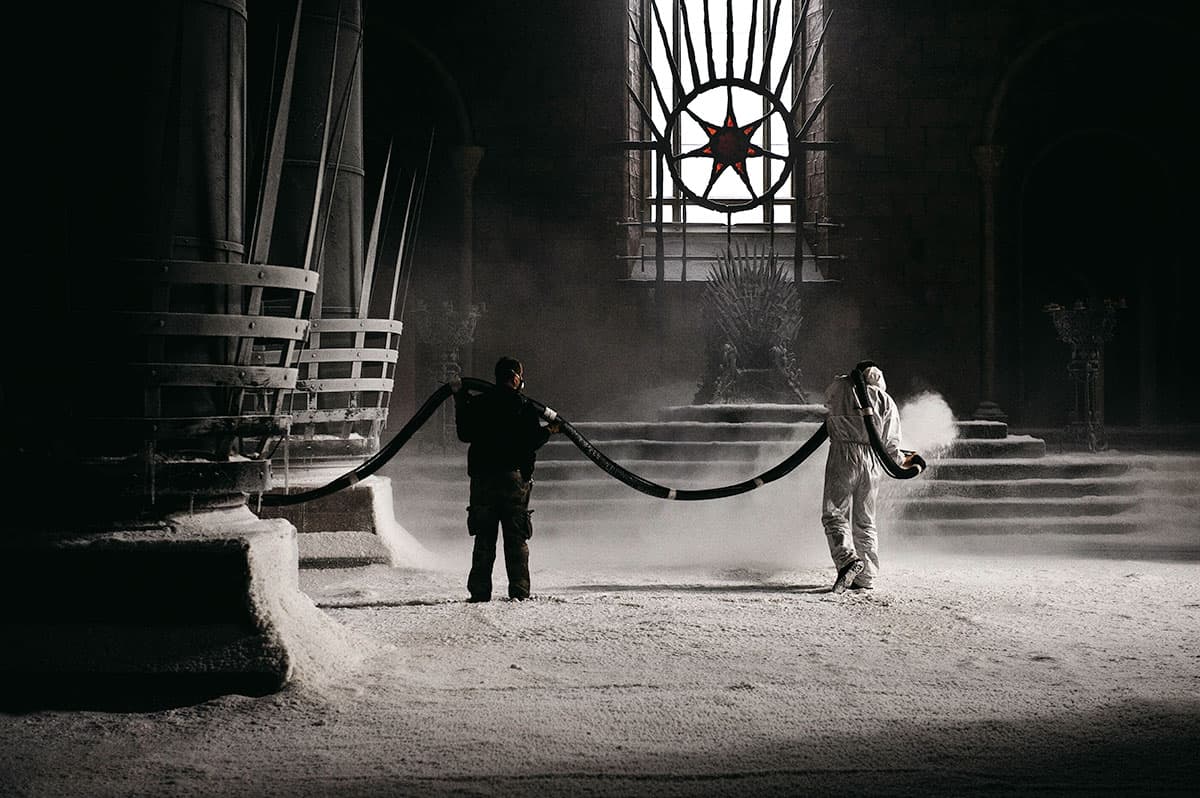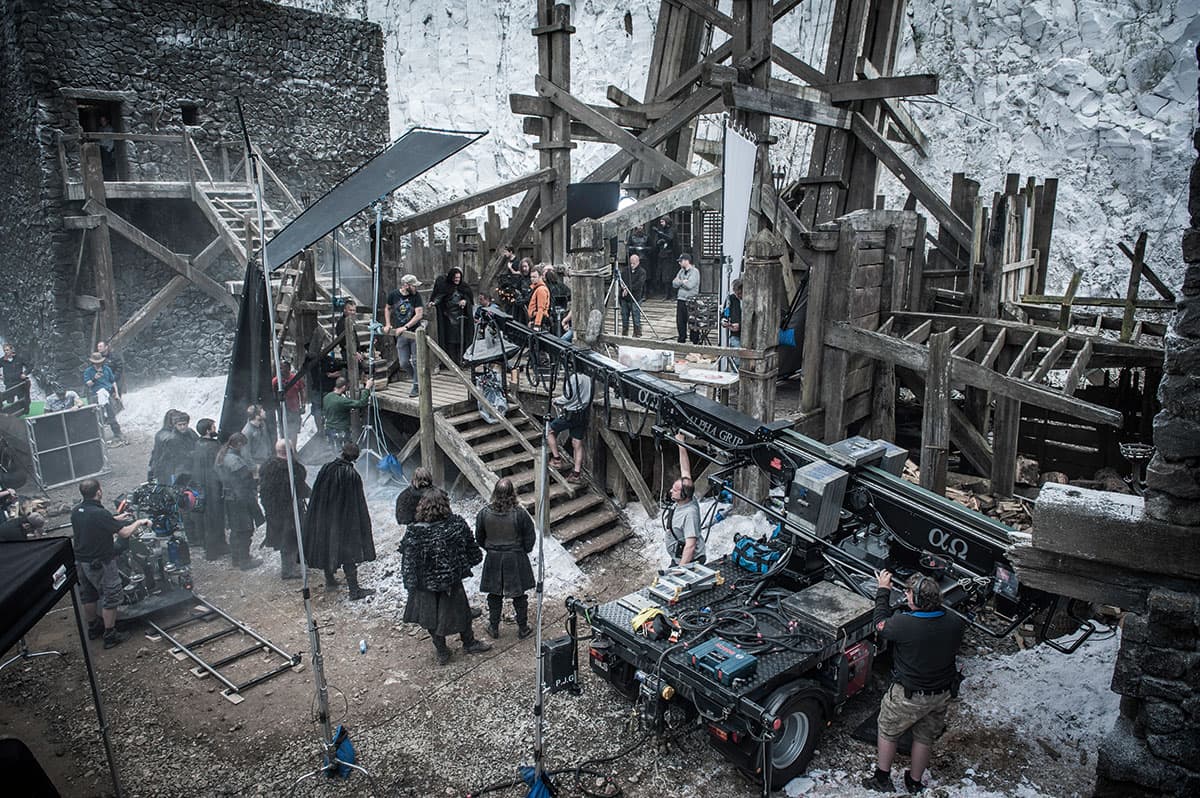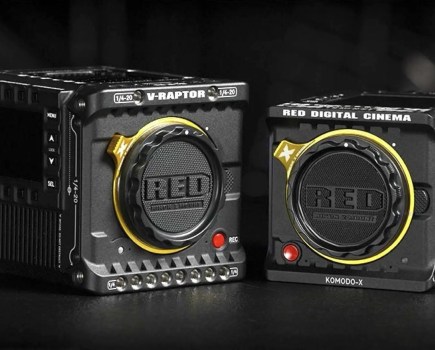For the uninitiated, the TV series Game of Thrones is based on the epic fantasy novel series A Song of Ice and Fire by George RR Martin. Set in medieval times in the fictional lands of Westeros and Essos, it draws its inspiration from a variety of historical figures and events – from the Wars of the Roses to Nordic mythology and Genghis Khan – mixed with a smattering of dragons and supernatural creatures, to create a detailed and immersive alternative history filled with ruthless rulers and Machiavellian scheming, in which good does not always triumph.
We caught up for a quick chat with Helen about her experiences working on the world’s biggest TV show.
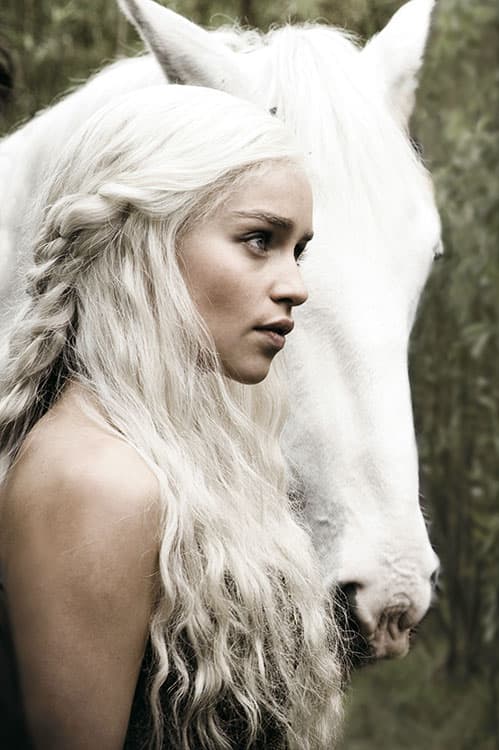
Emilia Clarke as Queen Daenerys Targaryen – one of the lead roles
From circus to the film industry
Helen, whose first proper job after studying art in college was official photographer to the Belfast Circus, has been involved with the series since day one in 2010, after HBO producers chose to base production in her native Northern Ireland. Her journey into movies began when a producer on a low-budget horror movie saw her circus pictures and got in touch.

‘The circus was really good practice for going into the film industry,’ she says. ‘You have to stay back and be discreet, so you don’t break the performer’s concentration. It’s also quite a nomadic existence because you’re always on the move, especially on something like Game of Thrones.’ The story has taken Helen to countries as diverse as Spain, Morocco, Malta, Croatia and Iceland, each presenting its own photographic challenges.
About 60% of her work is unit material (photographing the action as it’s being filmed), and 30% is behind the scenes documentary shots. The other 10% of her time is spent in the studio shooting portraits for posters.
What it’s like to work on Game on Thrones
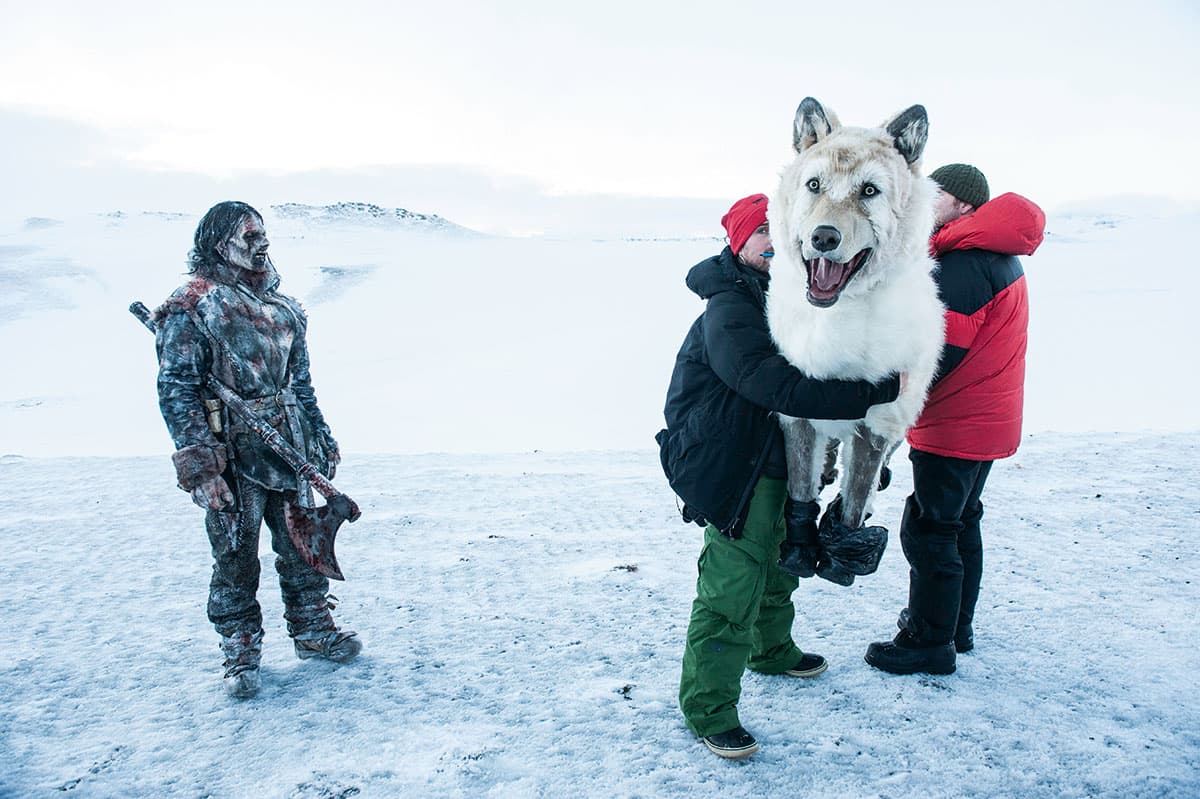
A stuntman looks on as VFX wranglers get ‘Stuffy’ ready
‘There isn’t really such a thing as an average day,’ she confesses. ‘One day we could be filming everyone having a feast and enjoying themselves – though being Game of Thrones someone usually dies – then the next day we’ll be setting fire to someone and throwing them off a boat.’
For her unit work, Helen prefers to shoot as the film cameras are rolling. She explains: ‘During the rehearsals they haven’t done the final checks on make-up and hair, and the performances can be very emotionally draining for the actors so it would be unfair to ask them to do it again just for me, afterwards.
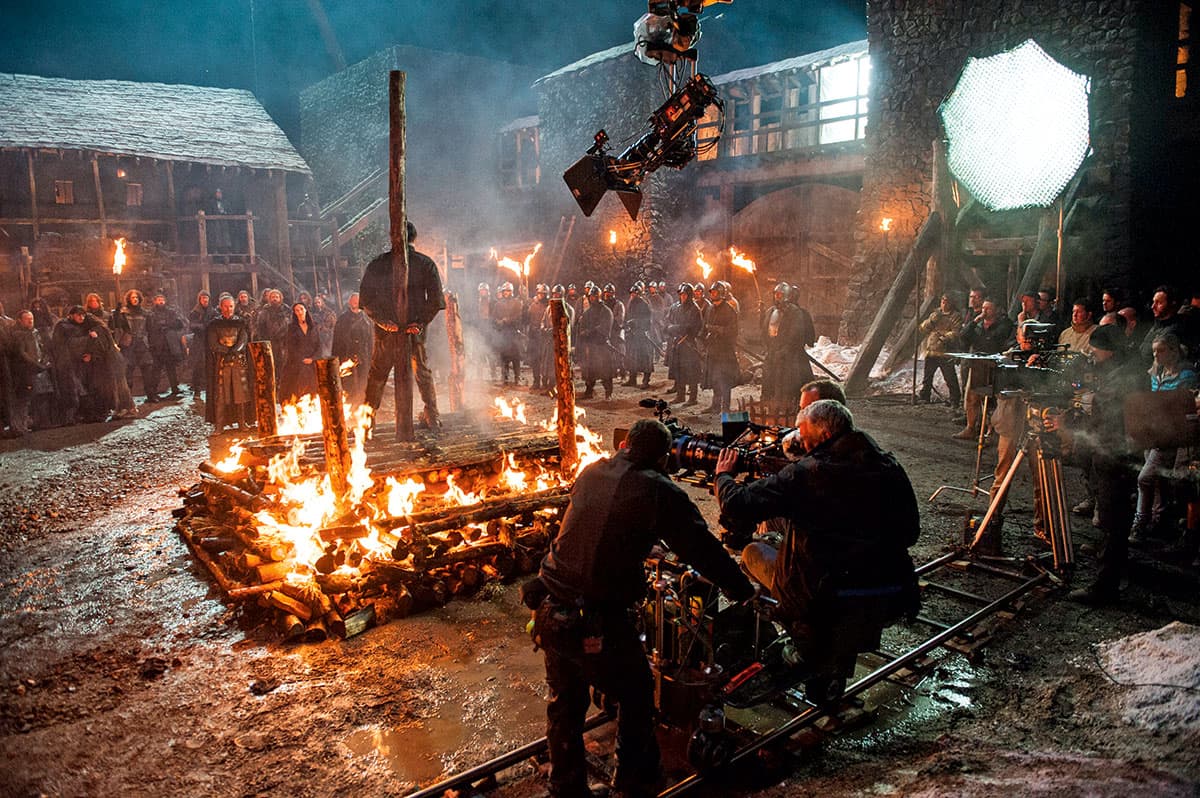
‘B’ camera filming at Castle Black for the first episode of season five
‘But it’s important to build up a relationship with people so they’re comfortable with you doing that. You have to know your camera inside out, of course, but patience and respect are just as important, and they don’t teach you that at college. There are a lot of people trying to do a lot of different jobs under a lot of pressure and you have to remember that no one’s job is more important than anyone else’s.
Helen considers herself to be doing her dream job. ‘It’s art on an industrial scale,’ she says. ‘Everywhere I look there’s a great photo – it’s 360° of cool. But it can be physically gruelling.’
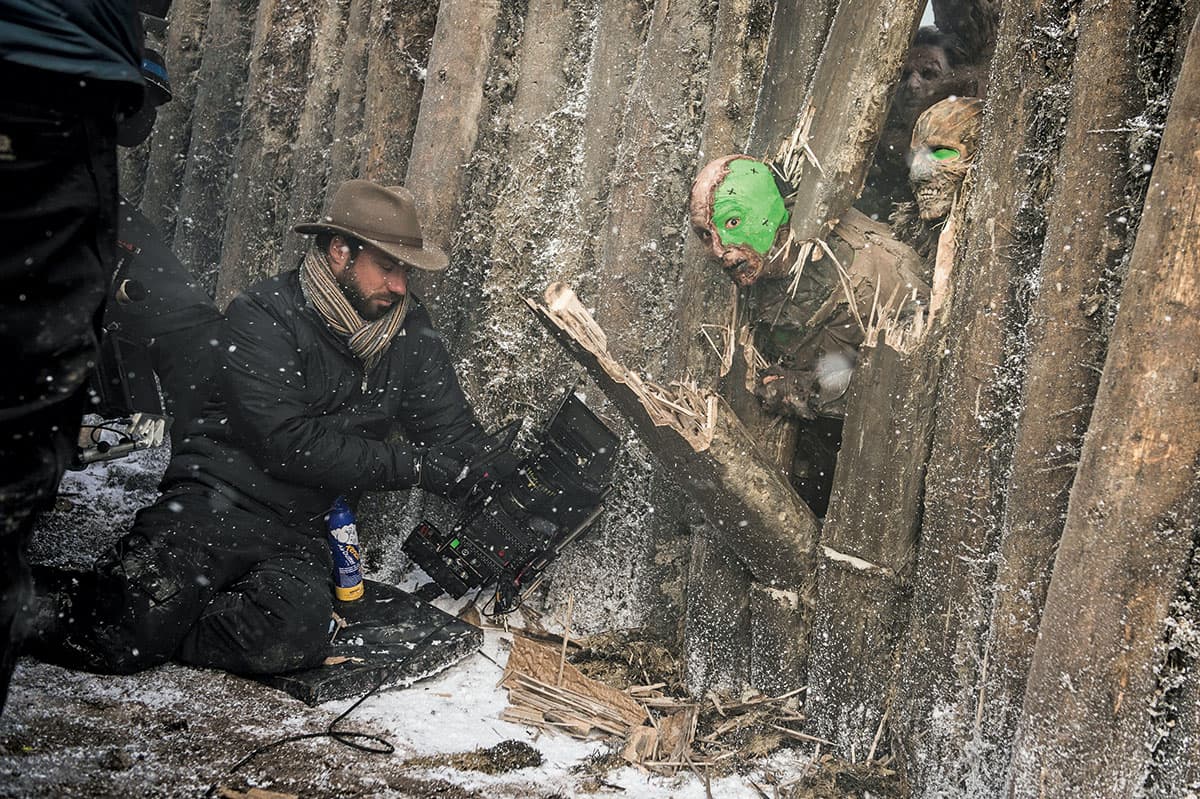
Director of photography Fabien Wagner with a stunt performer during the Hardhome sequence
A sneak peek into Helen’s camera kit
Helen reckons she has shot about 750,000 pictures, with her images used for publicity photos in features such as this, to posters, books and merchandise, and for the show archive. She shoots everything on a variety of Nikon cameras – she has two D3s, a D4, a DF and a D800. If pressed to pick a favourite, she says: ‘I’d probably choose the DF, because it’s a real superstar.’ Her collection of lenses is no less extensive. ‘There’s the Nikkor 24-70mm f/2.8 and Nikkor 70-200mm f/2.8, obviously, but I also carry a bag of primes, of which my favourite is the Nikkor 85mm f/1.4 – it’s the most beautiful piece of glass I’ve ever seen,’ she says.

Actor Jack Gleeson as King Joffrey Baratheon. Shot on set using a Nikon D800 with a 50mm f/1.4 lens
There’s a practical reason why Helen has so much kit. ‘To save time and be more efficient I have a different lens on each body,’ she explains, ‘so if I want a different lens I just pick up a different camera, rather than changing lenses, as I could be shooting out in the rain, or with sand in the desert. It means I’m opening things up and then spending three hours later cleaning sensors.’ All her cameras are housed in AquaTech or Jacobson sound blimps to make them near silent on set.
